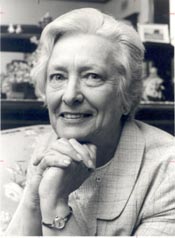Related Research Articles
James Turner may refer to:

Littleham is a village and civil parish in the Torridge district of north Devon in south west England, about 3 miles (4.8 km) south of Bideford. The parish had a population of 446 at the 2011 census.

Alfred Jefferis Turner was a pediatrician and amateur entomologist. He was the son of missionary Frederick Storrs-Turner. He introduced the use of diphtheria antitoxin to Australia in 1895. He resided in Dauphin Terrace, Highgate Hill, Brisbane, and was known by the nickname "Gentle Annie".
Araeomorpha is a genus of moths of the family Crambidae.

Metasia is a genus of moths of the family Crambidae. They are found mainly in Europe and Australia, but also in Africa, Asia, North America, and Pacific islands.
Corethrobela is a monotypic moth genus in the family Erebidae. Its only species, Corethrobela melanophaes, is known from the Australian state of Queensland. Both the genus and the species were first described by Turner in 1908.
Diplothecta is a monotypic moth genus of the family Noctuidae. Its only species, Diplothecta loxomita, occurs in Queensland, Australia. Both the genus and species were first described by Alfred Jefferis Turner, the genus in 1920 and the species 12 years earlier in 1908.

Proteuxoa is a genus of moths of the family Noctuidae. The genus was erected by George Hampson in 1903.

Pararguda is a genus of moths in the family Lasiocampidae. The genus was erected by George Thomas Bethune-Baker in 1908. All the species identified in this genus were found in Australia.

The Oecophorinae are the nominate subfamily of moths in the concealer moth family (Oecophoridae). They are part of the insufficiently studied superfamily Gelechioidea, and like their relatives, the circumscription of this taxon is disputed.
Rivula aenictopis is a moth of the family Erebidae first described by Alfred Jefferis Turner in 1908. It is found in northern Queensland, Australia.

Xyloryctidae is a family of moths contained within the superfamily Gelechioidea described by Edward Meyrick in 1890. Most genera are found in the Indo-Australian region. While many of these moths are tiny, some members of the family grow to a wingspan of up to 66 mm, making them giants among the micromoths.
Chloroclystis elaeopa is a moth in the family Geometridae. It was described by Alfred Jefferis Turner in 1908. It is found in Queensland, Australia.
Chloroclystis athaumasta is a moth in the family Geometridae. It was described by Turner in 1908. It is found in Australia (Queensland).
Chloroclystis perissa is a moth in the family Geometridae. It was described by Turner in 1908. It is found in Australia (Queensland).
This article presents a list of the historical events and publications of Australian literature during 1908.

Lilian Turner was an Australian writer.

Procometis is a genus of moths in the family Autostichidae.

Helen Alma Newton Turner was an Australian geneticist and statistician. She was a leading authority on sheep genetics and worked at the Commonwealth Scientific and Industrial Research Organisation (CSIRO) for 40 years.

The Thynnidae are a family of large, solitary wasps whose larvae are almost universally parasitoids of various beetle larvae, especially those in the superfamily Scarabaeoidea. Until recently, the constituents of this family were classified in the family Tiphiidae, but multiple studies have independently confirmed that thynnids are a separate lineage.
References
- ↑ "GlobIZ search". Global Information System on Pyraloidea. Retrieved 2014-07-15.
- ↑ Turner, Alfred Jefferis (1908). "New Australian Lepidoptera of the families Noctuidae and Pyralidae". Transactions of the Royal Society of South Australia. 32: 81–82. Retrieved 17 December 2024.